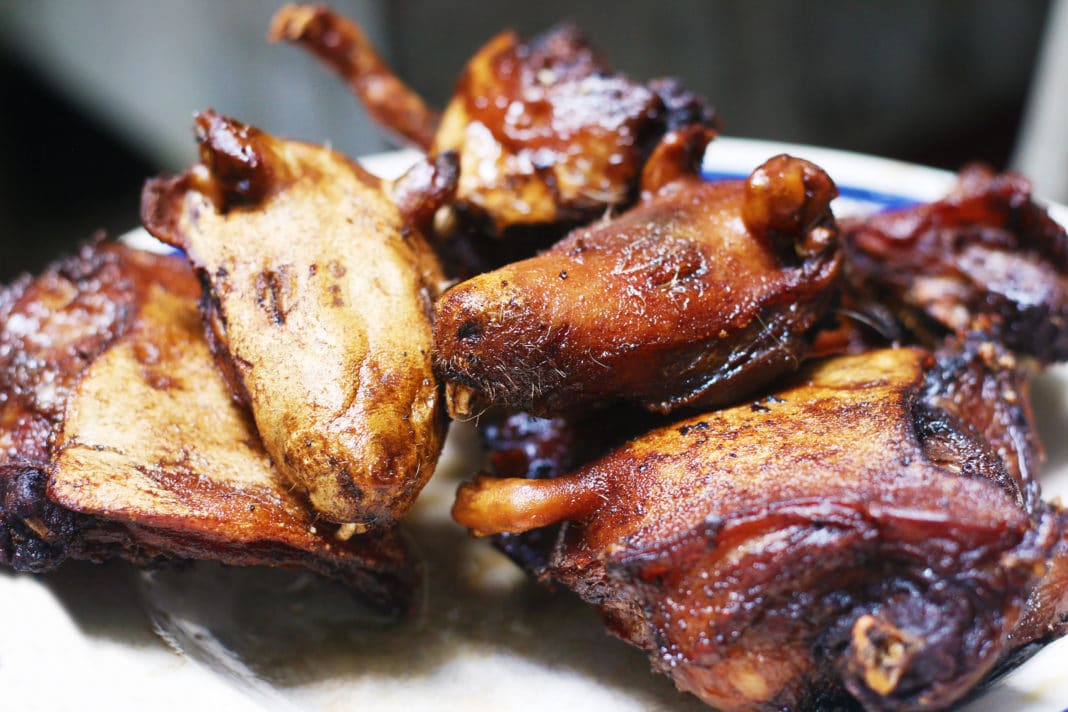- Cuy (guinea pig) is a traditional Andean meat eaten in Ecuador, Peru, and Bolivia, historically a primary local protein source.
- Preparation varies: Ecuadorian cuy is spit-roasted; Peruvian "cuy chactado" is flattened and deep-fried, yielding a stronger flavor than chicken.
- Eat cuy with your hands, expect messiness; it's well-seasoned and a daring cultural food experience that makes memorable travel stories.
We travel to new places for many reasons; to relax on the beach, explore natural attractions, enjoy luxurious resorts, and more. Don't get us wrong—we love traveling with these things in mind, but our top priorities lie elsewhere: food tasting. We would roam the world just to experience distinct dishes that are foreign to our everyday palate. This can require some serious bravery as not all the food we come across looks appetizing, but it's often worth the experience. One prime example of this is found in certain countries in the Andean regions of South America, and it's called cuy, known to us as guinea pig. Yep—guinea pig is right. It's quite an alarming thought for us North Americans as we're known to keep these little creatures as our cuddly pets.
What is Cuy?
If it makes you feel any better, cuy is not your typical guinea pig—at least probably not the type you're thinking of. While they're still small, these guinea pigs are comparably much larger than the ones North Americans keep as domestic, furry friends. They're found (and eaten) in Ecuador, Peru, and Bolivia, and are mainly used for food. This might seem cruel to us, but this was the main source of meat in these regions long before they had sheep, chicken, or cattle. Over time, cuy became a traditional food for these countries, usually being reserved in the home for special occasions.
How Cuy is Prepared
Credit: Jharni Elmer Neyra Valverde
This Andean specialty is prepared differently depending on which country you're visiting. In Ecuador, cuy is generally roasted on a spit over coals and is often accompanied by corn on the cob or rice. However, in Peru, it's often flattened and deep fried, a dish that Peruvians call “cuy chactado.”
Regardless of what country you're in when trying cuy, it will probably taste like a cross between chicken and rabbit. The only difference is that, well—you're actually eating guinea pig, and also that the flavor is much stronger than these other meats. That being said, the flavor may be even less poultry-like depending on how old the guinea pig was or how it's cooked. If you're not feeling quite ready for the up-in-the-air flavor of cuy, we suggest going for the fried version. Everything is better fried.
How to Eat Cuy
Don't be afraid to eat this meal with your hands, and don't be ashamed of the mess you'll probably make. In fact, it will most likely be both strange and awkward to try eating with knife and fork. Getting a little messy while eating this dish is pretty much unavoidable, so you keep napkins upon napkins in reach. You can have extra salt or other seasonings on hand if you want, but we doubt you'll need them. These guinea pigs tend to be generously seasoned already.
Trying the cuisine in different cultures is adds to the whole travel experience. Think about it. Aren't some of the most memorable adventures you've had involved being daring enough to taste something that seemed absolutely bonkers? You might end up ordering three more rounds of the dish or end up gagging your way through your meal. Either way, you'll be able to say you tried it, and you'll definitely have a good story to tell.
Next time you visit Peru, Bolivia, or Ecuador, will you be bold enough to give cuy a try?
Or if you have had cuy before, what did it taste like to you? Share your thoughts and experiences in the comments below!
Related Article: Korean Food: 20 Mouthwatering Meals





